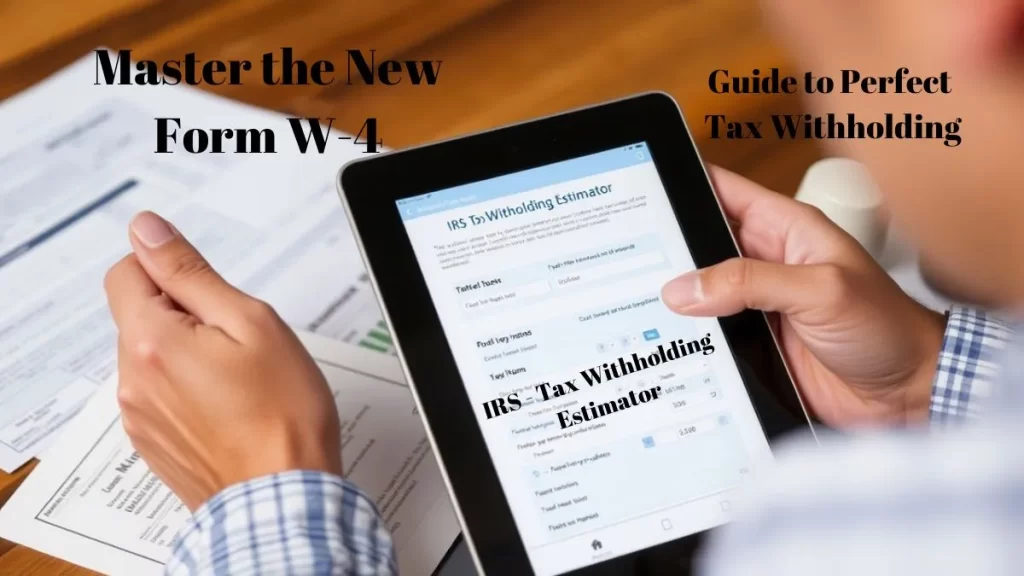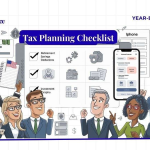Filling out your Form W-4 can be confusing. This is especially true if you are not sure what steps you need for your tax situation. Understanding when and how to alter your withholding is vital to dodging shocks when recording your tax return.
In this post, we will explain the updated Form W-4. This will help you understand it easily. By the end, you will know exactly what to do. This will help ensure your withholding matches your tax risk as closely as possible.
Do I Need to Complete All Five Steps on the Form W-4?

No, you do not need to complete all five steps on the W-4 form. The form is divided into five sections, but only two steps are mandatory for everyone:
- Step 1: Enter your personal information, such as your name and filing status.
- Step 5: Sign the form.
These two steps are required for all employees, regardless of their specific tax situation. Steps 2 through 4 are optional and should only be filled out if they apply to you. If you choose to complete these sections, they help ensure that the amount withheld from your paycheck is as accurate as possible based on your circumstances.
How to Fill Out Form W-2 in 2025: All About the Wage and Tax Statement
What Happens If I Fill Out Step 1 and Sign the Form?

If you only complete Step 1 (personal info) and Step 5 (signature), your withholding will be calculated based on the standard deduction and tax rates for your filing status. Your employer will withhold taxes uniform to the introductory rates without factoring in any additional adjustments for other income or deductions. In this case, you may find that your withholding doesn’t perfectly match your actual tax liability, which could lead to owing money when you file your tax return or potentially missing out on a refund.
When Should I Increase My Withholding?
There are a few situations in which you may want to increase your withholding to avoid a surprise tax bill:

- Multiple Jobs: If you hold more than one job, or you and your spouse are employed (Step 2), your combined income may push you into a higher tax bracket. Increasing your withholding ensures that enough tax is withheld from each paycheck.
- Extra Sources of Income: If you have income that doesn’t have tax automatically withheld, such as rental income, dividends, or freelance work, you should consider increasing your withholding (Step 4a) to cover the taxes owed on that income. If you don’t adjust for these income sources, you might face a large tax bill when filing your return and possibly penalties.
If you cannot have taxes withheld from these other income sources, you can also pay approximately avoided contributed penalties and pay taxes throughout the year.
When Should I Decrease My Withholding?
Conversely, you might want to decrease your withholding if you’re eligible for certain tax credits or deductions. This can help boost your take-home pay throughout the year. Here’s when to consider adjusting your withholding:

- Tax Credits: If you qualify for credits like the Child Tax Credit or the Credit for Other Dependents (Step 3), this may diminish the resources you owe. By modifying your withholding, you can reflect these credits and diminish the appraisal taken from your paycheck.
- Deductions: If you arrange to claim findings past the standard finding, such as for IRA contributions or understudy credit intrigue (Step 4b), you should decrease your withholding to dodge overpaying. This alteration will offer assistance to guarantee that your withholding reflects your qualified findings.
Everything You Need to Know About the 2025 Child Tax Credit Reforms Under Trump
If you adjust your withholding to reflect your credits and deductions, you may see a slight increase in your take-home pay throughout the year rather than getting a refund when you file your tax return.
Child Tax Credit: $300 Direct Deposit 2025: Eligibility, Payment Dates, and What You Need to Know
I Want a Refund When I File My Tax Return—How Should I Complete the Form W-4?

If you prefer to have more tax withheld than necessary (and receive a refund when you file your return), the redesigned W-4 makes this easier. You can enter an additional amount in Step 4C to increase your withholding. This will direct your employer to withhold a little more from each paycheck.
Remember, though, that while you can get a refund, you won’t earn interest on the extra tax you pay throughout the year. If you qualify for sure-assessed credits like the Earned Income Tax Credit or the Child Assess Credit, you might still receive a refund, even if no federal income tax is withheld from your wages.
IRS Sends Out $1,400 Stimulus Payments: How to Know if You Qualify
Can I Use a Tool to Help Me Complete the Form W-4?
Yes! The IRS offers a helpful tax tool called the Tax Withholding Estimator that can assist you in filling out your Form W-4 accurately. You can find this estimator online at IRS.gov/w4app. It’s beneficial if:

- You expect to work only part of the year.
- Last year, you had a large tax balance due (or a large refund).
- You have income from dividends and capital gains or are subject to additional taxes like the Medicare tax.
- You have self-employment income.
- You prefer accurate withholding for multiple job situations or complicated tax circumstances.
- You want to limit the information you provide in Steps 2-4 without sacrificing accuracy.
Using the estimator will help ensure you get your withholding right so you don’t owe a large sum come tax time or overpay and miss out on extra cash in your paycheck.
For your ready reference to calculate the W4 Estimator
Frequently Asked Questions (FAQs) About Form W-4
Q1. Do I need to complete all five steps on the Form W-4?
A1. No, only Steps 1 and 5 are required. Step 1 is for your personal information, and Step 5 is for your signature. Steps 2 through 4 are optional and can be completed if they apply to your situation.
Q2. What happens if I only fill out Step 1 and Step 5?
A2. If you complete only Step 1 (personal info) and Step 5 (signature), your withholding will be calculated based on the standard deduction and tax rates for your filing status. This may result in withholding that doesn’t perfectly match your actual tax liability, which could lead to either owing money or missing out on a refund when you file your return.
Q3. When should I increase my withholding?
A3. You should consider increasing your withholding if:
- You have multiple jobs, or you and your spouse are employed (Step 2).
- You have additional sources of income like rental income, dividends, or freelance work (Step 4a).
Q4. When should I decrease my withholding?
A4. Consider decreasing your withholding if:
- You are eligible for tax credits such as the Child Tax Credit or the Credit for Other Dependents (Step 3).
- You plan to claim deductions beyond the standard deduction, such as IRA contributions or student loan interest (Step 4b).
Q5. How can I receive a refund when I file my tax return?
A5.Toensure you receive a refund, you can enter an additional amount to be withheld in Step 4C of the form. This will increase the amount taken from each paycheck, potentially leading to a refund when you file your tax return.
Q6. Can I use a tool to help me complete the Form W-4?
A6. Yes, the IRS provides a Tax Withholding Estimator online at IRS.gov/w4app. This tool helps you fill out the W-4 accurately and is especially useful for:
- Part-time workers or those expecting to work only part of the year.
- Individuals who had a large tax balance due or refunded last year.
- People with self-employment income or other complicated tax circumstances
Conclusion
Filling out the W-4 doesn’t have to be an overwhelming assignment. Understanding when to alter your withholding can guarantee your charges are overseen accurately throughout the year. Apparatuses like the IRS Charge Withholding Estimator can offer assistance in making educated choices if you are uncertain. Whether you require to increment or diminish your withholding, the key is guaranteeing that it reflects your monetary circumstance as closely as conceivable.
Take the time to review your W-4 regularly, especially after any significant life changes, to keep your withholding accurate and avoid surprises come tax season.
Thank you for reading this post, don't forget to subscribe!







An interesting discussion is worth comment. There’s no doubt that that you should publish more about this subject matter, it may not be a
taboo matter but usually folks don’t talk about these issues.
To the next! Many thanks!!